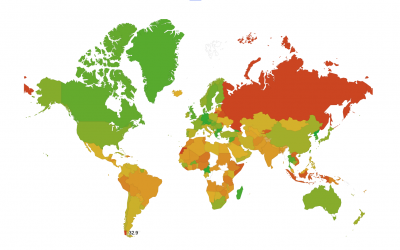How do students try to cheat their universities?
Students who are involved in plagiarism use some methods to avoid getting detected. With the growth of technology and tools readily available on the Internet, there are many tools that actually help accomplish all these plagiarism techniques. These different techniques help students avoid their open-access articles to get properly indexed in search engines, which means that the work gets published but should have been stopped from publishing.
For this reason, anti-cheat techniques are adopted by universities to avoid plagiarism. Following are the different kinds of cheating techniques that are adopted by students.
Paraphrasing Text
Students often paraphrase text in the rush to complete their assignments. Students who paraphrase their work usually replace certain words. Paraphrased text involves words and sentences that are spun. There are a lot of online tools that make paraphrasing easier. In fact, article spinning is one of the most widely used methods to get past plagiarism tools as it allows for words, sentences or even paragraphs to be replaced.
Recoding Characters (From Latin to Cyrillic characters)
Recoding characters is a cheating technique used by plagiarists to replace certain characters of the Latin script with Cyrillic. Since there are similar letters in the Latin and Cyrillic system, such as p, a, e, o, and i, some plagiarists use this similarity script to their benefit. When plagiarism is done, the Latin characters are replaced by Cyrillic to confuse the viewer and the plagiarism tools. Since many plagiarism tools can detect character by character, therefore plagiarists do this to avoid exact character recognition.
Inserting White Characters or Double Spacing
Whitespaces or double spaces can be used in the form of patterns for plagiarism. To avoid such cheating from happening, a plagiarism tool is used by universities to detect the source code of the underlying text. The source code consists of strings, identifiers, comments, and statements which are then matched and scanned to detect any double spaces not visible at first sight. If the whitespace pattern of the file compared to itself gives a score of 100% similarity, then the pattern is original and not copied. If it produces a good similarity score with another file, then it is a copy of that file. The source code file is converted into a white space file format to perform the test. Some students even use white characters to increase word count.
Inserting picture instead of text
Nowadays inserting text images (screenshots) is also a widespread method to cheat anti-plagiarism software. But some of the solutions foresaw this cheat technique and have implemented catch measures. For example, OXSICO has OCR recognition it means our solution can scan and extract text from images or scanned documents as usual text. OCR recognition is useful if you have older documents that are not digital or they are scanned for example books.
Although there are many software’s out there that have tried to tackle plagiarism issues by performing detection for all of the techniques above, but not all of them can’t detect all of the above.
OXISCO has implemented algorithms to detect all the above cheating methods, making them perfect for use in universities.
Translating Texts from other Languages
To avoid detection tools, students look up work in other languages and then translate it to the language in which they are required to submit their assignment or work. An anti-cheat technique used by plagiarism tools in universities translates the work into multiple languages to cross-check and identify any similar words and patterns.
OXSICO translation technology will be launch in 2021 the last quarter.



